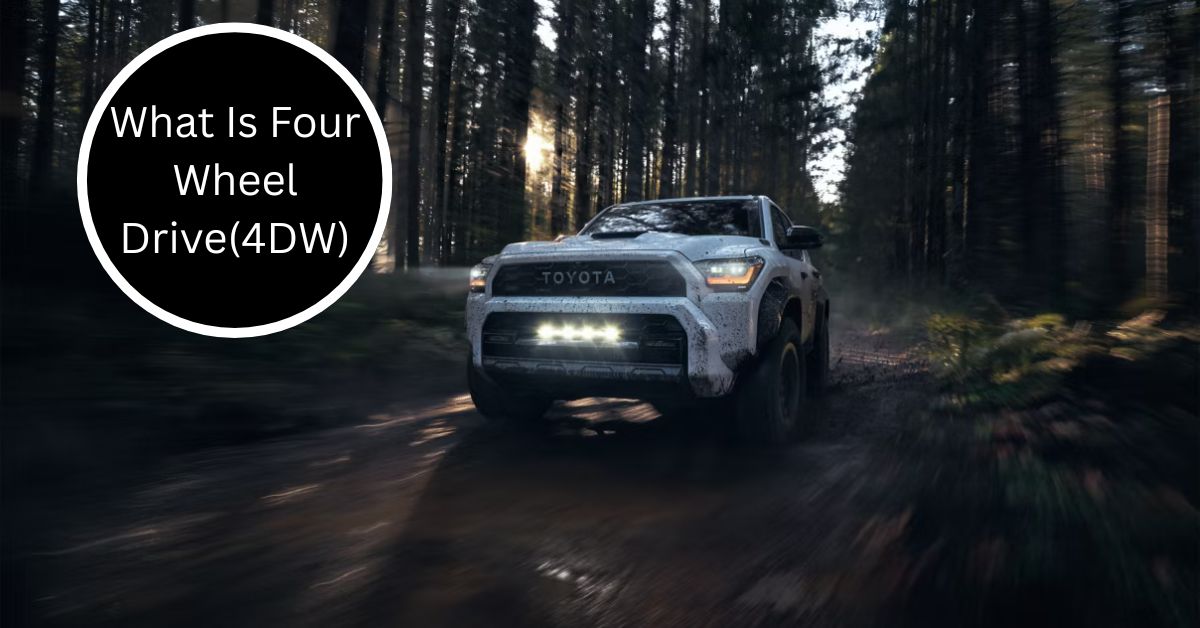What is Four Wheel Drive ? It’s a system in vehicles that sends power to all four wheels at the same time. In regular two-wheel drive (2WD) cars, only the front or back wheels get power. But in a 4WD vehicle, all four wheels work together, which helps the car get better grip and control—especially on rough, slippery, or uneven roads. That’s why 4WD is great for driving on snow, mud, hills, or off-road trails.
Why Four-Wheel Drive (4WD) Offers Better Traction
The main benefit of 4WD is that it sends engine power to all four wheels. So, if one wheel slips on ice, mud, or loose gravel, the other wheels can still keep the vehicle moving. This helps avoid getting stuck. In a 2WD car, if both powered wheels lose grip, the car just spins and can’t go anywhere. That’s why 4WD is much better for driving in tough or slippery conditions where traction is really important.
Types of Four-Wheel Drive (4WD) Systems
There are mainly two types of 4WD systems: part-time and full-time. Full-time 4WD is also sometimes called all-wheel drive (AWD). While they work a bit differently, both are often grouped together because they perform similar functions—sending power to all four wheels for better control.
What is Part-Time Four-Wheel Drive (4WD)?

Part-time 4WD systems are made to be used only when needed—like on off-road trails or in very slippery conditions. During normal driving on dry roads, the vehicle runs in 2WD mode (usually with power going to the rear wheels). When the road gets rough, the driver can switch to 4WD by using a lever or button. This connects the front and rear wheels so they turn at the same speed, giving better grip on loose or uneven surfaces.
However, using 4WD on dry pavement can damage the vehicle. That’s because when turning, the front and rear wheels need to spin at slightly different speeds—but a locked 4WD system doesn’t allow that, which can cause strain on parts. So, part-time 4WD is perfect for people who go off-road often but still drive in 2WD for regular, everyday use.
What is Full-Time Four-Wheel Drive (4WD) or All-Wheel Drive (AWD)?

Full-time 4WD, also known as All-Wheel Drive (AWD), always sends power to all four wheels. The big difference is that it has a special part called a center differential, which lets the front and rear wheels turn at different speeds. This helps prevent damage when driving on dry roads, so you can use AWD all the time without worry.
Many modern SUVs and crossovers use AWD to give better traction and safety in different weather, like rain or light snow, and it works automatically—no need for the driver to switch modes. Some high-end full-time 4WD systems also include smart features like locking differentials and terrain modes, which adjust how power is used depending on the surface, making them great for off-roading while still being smooth and safe for daily driving.
How Four-Wheel Drive (4WD) Works Behind the Scenes
4WD systems rely on a few key parts to send power to all four wheels. One of the main parts is the transfer case, which takes power from the transmission and splits it between the front and rear wheels through driveshafts. These driveshafts then send power to the differentials, which help distribute it to each wheel on the front and back axles.
In more advanced 4WD setups, there are electronic sensors and computers that can automatically sense when a wheel is slipping. They adjust the power to the right wheels to keep you in control, giving you even better grip and handling.
Benefits of Four-Wheel Drive (4WD)

4WD comes with many advantages. It gives better grip on slippery roads, which helps with faster takeoff and climbing steep hills. It’s also a big safety boost in bad weather, like rain, snow, or ice, by helping you stay in control. If you love outdoor adventures like camping, fishing, or exploring rough off-road trails, 4WD is a must—it lets you reach places that regular vehicles can’t.
Things to Keep in Mind About Four-Wheel Drive (4WD)
While 4WD has many benefits, there are a few things to consider. These systems add extra parts to the vehicle, which can make it heavier, more complex, and more expensive than a 2WD version. The added weight might also lower fuel mileage a bit, and repairs or maintenance can cost more over time. Still, for people who value safety, strong performance, and the ability to drive on all kinds of roads or trails, 4WD is usually worth the extra cost.


